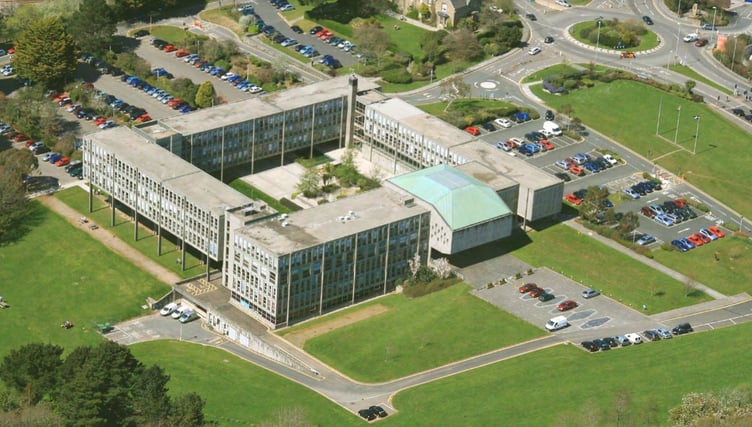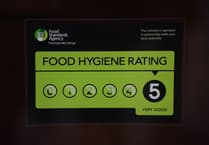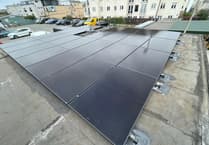The council voted in 2019 to be carbon neutral by 2030, but following advice from officers the authority is due to “reset” to what it sees as a more realistic date of 2045.
A meeting of the council’s sustainable growth scrutiny committee heard on Tuesday (October 7) that Cornwall’s emissions have reduced by between two to three per cent annually since 2019, well below the rate of reduction required to meet the target of Cornwall being carbon neutral by 2030 and “illustrating the scale of challenge we collectively face to decarbonise the economy”.
However, the committee agreed to a recommendation the target be pushed back to 2045 as part of plans to reset Cornwall Council’s climate and nature recovery ambitions. The matter will now go to the council’s Liberal Democrat / Independent coalition cabinet for backing.
As part of its new Net Zero by 2045 target, the council aims to ensure that 100 per cent of Cornwall’s electricity demand is met by renewable sources by 2035, with 8,000 hectares of additional trees planted by the same year and that 65 per cent recycling is met by 2035. It also has a target that all private rented properties have an Energy Performance Certificate (EPC) rating of C by 2030, with the same aim for all Cornwall Housing council stock. The council also wants to have a Net Zero emissions reduction rate of 90 per cent by 2040 (70 per cent by the original target of 2030).
A report to the committee stated: “Since declaring climate and ecological emergencies, Cornwall Council has had to develop its strategies within a rapidly evolving national policy and legislative landscape. The UK Government has since amended the Climate Change Act to require net zero greenhouse gas emissions by 2050 and introduced the Environment Act 2021 to drive nature recovery. Together, these commitments form the context in which local authorities and key stakeholders must plan, aligning delivery of local ambitions with national goals.”
Cllr Mark Gibbons (Looe East and Deviock, Independent) asked if there were specific risks which made 2030 no longer a viable target and how a new target of 2045 would address those risks more effectively.
He was told by Mark Holmes, the council’s head of environmental partnerships and climate change, that the risk was around delivering renewable energy schemes following evidence from the Cornwall and Isles of Scilly Local Area Energy Plan (LAEP), which wasn’t available when the original action plan was set.
“We said at the outset that 2030 was an ambitious target that may well prove impossible, but it was felt it was better to go faster and see what opportunities that might unlock,” he added. “We have unlocked around £250-million of investment into Cornwall due to the action we’ve taken.”
Cllr Laurie Magowan (Falmouth Arwenack, Labour) said: “Initially I was disappointed to hear about the proposals in pushing back on the 2030 Net Zero ambitions for Cornwall. Despite the good progress, I think it’s been clear for some time that the achievement of the target was going to be extremely challenging, so I’ve come to the conclusion that aligning with international and national recommendations, science and policy to push this back to 2045 is the right thing to do.”
The committee was told that Cornwall Council has led the development of the Cornwall and Isles of Scilly LAEP, an evidence-based roadmap for a net zero energy system. Endorsed by Cabinet earlier this year, the LAEP identifies how Cornwall can decarbonise heat, power and transport, projecting 2045 as a realistic target for achieving a fully net zero energy system, five years ahead of the UK’s legally binding target.
Cllr Peter Channon (Hayle West, Reform UK) added: “We’ve had a reality check – I think it was obvious this was going to happen. Unfortunately what we’re not having a reality check on is the cost of energy. Cornwall is not an economically sound county. People can’t afford it and this must be taken into account with this carbon neutral target.”
“I want to leave Cornwall in a better place and not with hardware all over it. I welcome moving it from 2030 to 2045, but what does that mean if I vote for that when actually I would like to scrap the whole thing?” asked Cllr Roger Tarrant (Redruth North, Reform UK). He was told he could abstain.
The LAEP was co-developed with over 4,000 stakeholders, balancing technical modelling with local preferences and community needs. It provides an indicative cost of £23-billion for Cornwall to transition to a Net Zero energy economy. The council report states: “Whilst this is £9.7-billion more than continuing with the council’s current system, national policy means doing nothing is not an option and local investment and action will be required to ensure we are more resilient.
“£5-billion of the additional investment required relates directly to opportunities to meet Cornwall’s electricity demand through renewable sources and contribute to wider UK targets. This investment unlocks 6,000 jobs and savings in energy bills helping tackle fuel poverty and improve business resilience further illustrating that transitioning Cornwall’s energy system represents an opportunity to invest in our future, unlock green jobs and generate clean growth.”
The ‘reset’ report adds that the Cornwall and Isles of Scilly Nature Recovery Strategy (NRS) and LAEP show that delivery cannot be achieved by the council alone. Progress requires leadership across government, business, landowners, communities and individuals.
“Governance arrangements through the Cornwall and Isles of Scilly Climate Commission, Local Nature Partnership and Leadership Board will be central to embedding these strategies and developing the right delivery model.”





Comments
This article has no comments yet. Be the first to leave a comment.